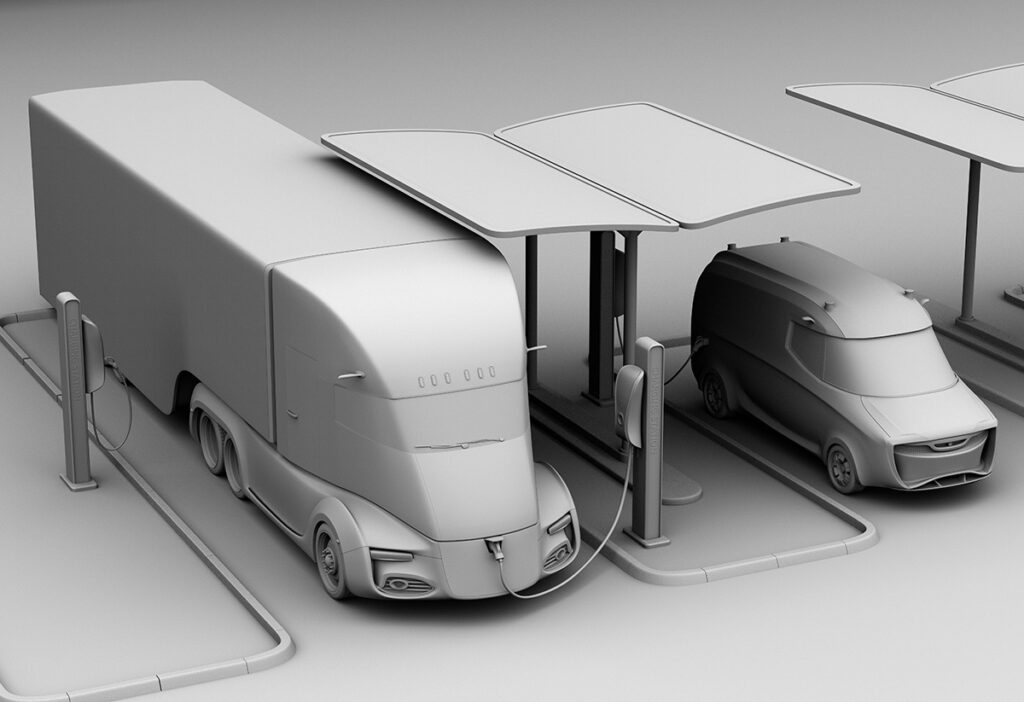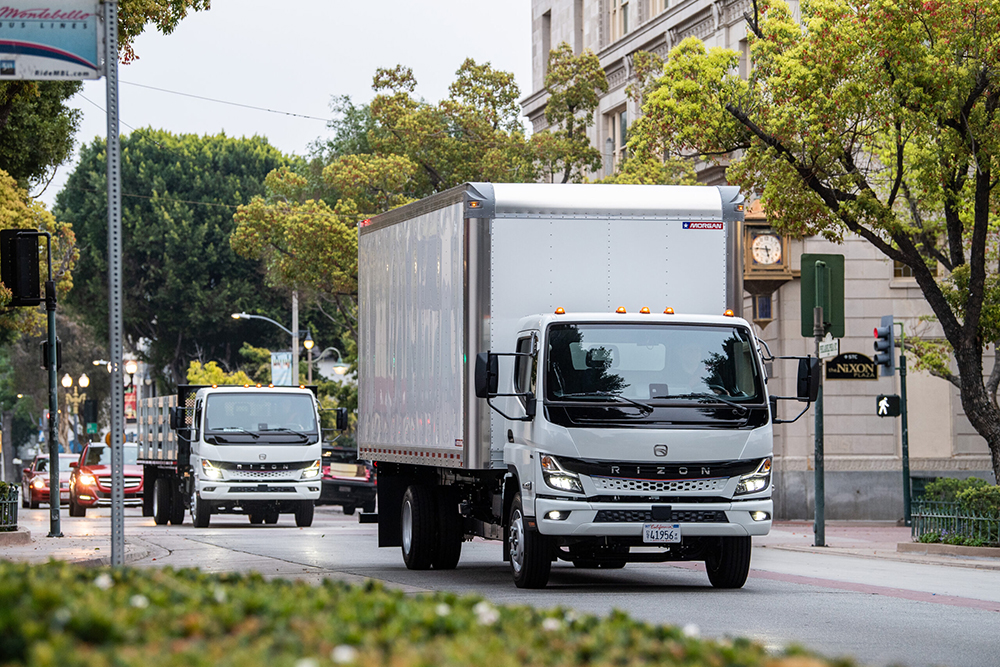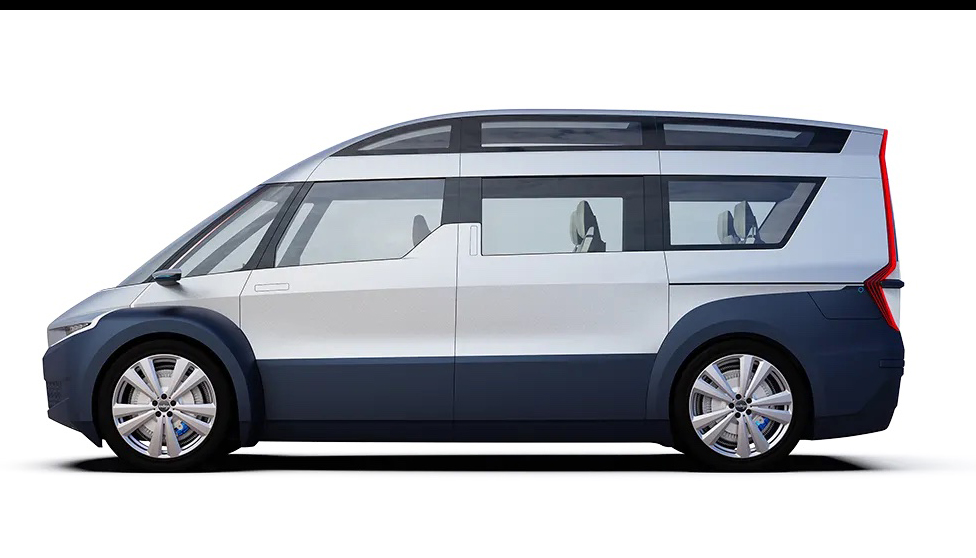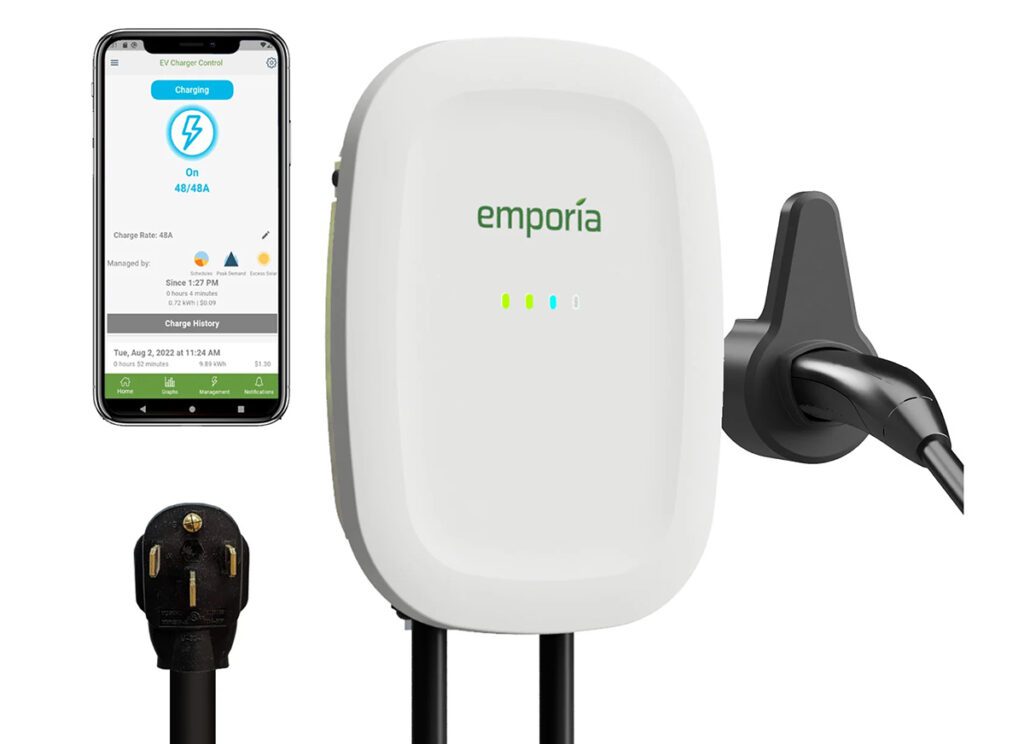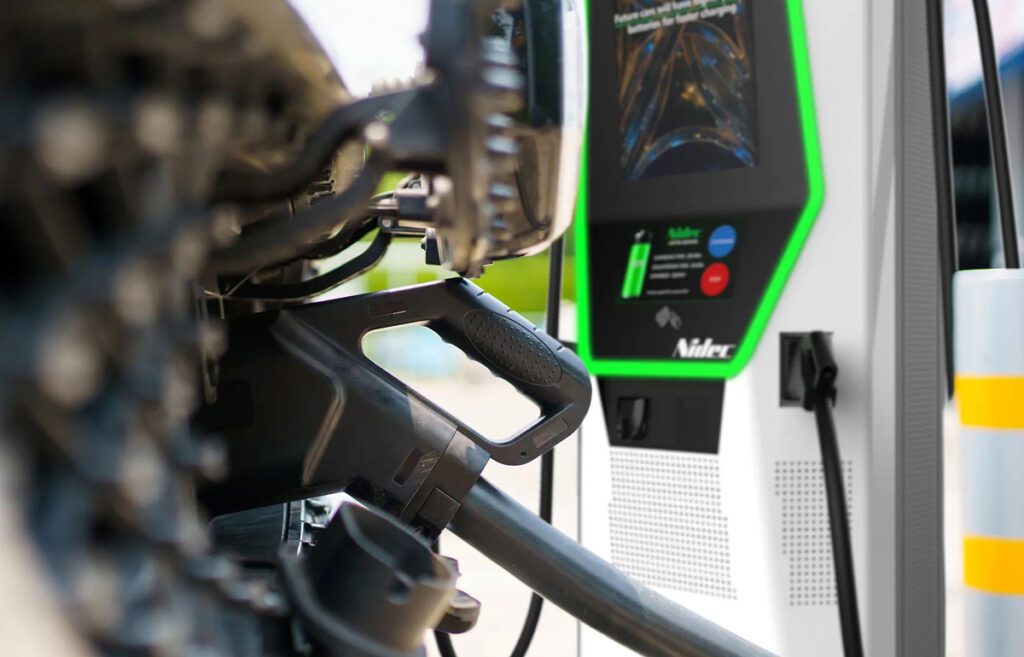- The California legislature is considering a bill that would require most EVs sold in the state to be bidirectional-capable by 2027. In recent testimony, Nuvve CEO Gregory Poilasne told the lawmakers that bidirectional charging can reduce the total cost of EV ownership, and that it’s essential for integrating more renewable energy into the grid.
- The bill is agnostic in terms of how V2X tech is implemented. Poilasne believes this is the best approach, as it allows infrastructure providers to explore different varieties of V2X, and will drive auto OEMs and utilities to develop their parts of the V2X ecosystem.
- During the recent California heat wave, Nuvve helped to reduce peak demands on the grid through the Emergency Load Reduction Program, using bidirectional-capable school buses to feed energy back to the grid.
Explaining the benefits of bidirectional EV charging: Q&A with Nuvve CEO Gregory Poilasne
The term “game-changing” gets thrown around a lot in the EV field, but if there’s any new technology that really does deserve to be described this way (as California Governor Gavin Newsom recently did), it’s bidirectional charging.
Going bi adds several nifty new benefits to driving electric. It turns an EV into a mobile battery that can be used to provide backup power to a home or business, and to provide services to the electrical grid, generating revenue for the vehicle owner and potentially offsetting a significant part of the purchase price of the vehicle.
What’s more, bidirectional charging is no hypothetical future technology—it’s here now, and it’s being used around the world in pilot projects and a few commercial-scale programs. A handful of bidirectional-capable EVs are available today, and automakers are quickly implementing the technology. In just a few years, every new EV, on both the consumer and commercial sides, is likely to be bi.
Charged spoke with Nuvve CEO Gregory Poilasne about the various V2G projects that his company is working on around the world, and his recent testimony before the California legislature, which is considering a bill that would require all EVs sold in the state to be bi-capable by 2027.
Charged: We’ve been covering your company for several years. As Nuvve is one of the pioneers of bidirectional charging, I imagine you can explain the benefits as well as anyone. What did you tell the folks in Sacramento?
Gregory Poilasne: In April, I went in front of the Energy Committee and the Transportation Committee of the California Senate. This bill authored by Senator Nancy Skinner is called SB 233, and it would require electric vehicles to have bidirectional capabilities by 2027.
The idea is that having vehicles with bidirectional capabilities creates an environment where innovators like Nuvve can develop business models. Bidirectional EVs would be enough to accelerate adoption of bidirectional services.
Initially, the bill also required the infrastructure—the charging stations—to be bidirectional, but then they decided to split the two. The idea is that having vehicles with bidirectional capabilities creates an environment where innovators like Nuvve can develop business models. Bidirectional EVs would be enough to accelerate adoption of bidirectional services. This would naturally drive more bidirectional charging stations like ours, and all the required hardware to support vehicle-to-grid services and more.
The bill doesn’t say how the bidirectional capability needs to be integrated. You could do V2G through the DC port of the vehicle—this is what we are doing with school buses here in California, where our charging station converts AC to DC and then connects to the DC port of the vehicle to provide power. Then it takes the DC from the bus, or car, and converts it back to AC to provide power for the grid. That’s one way. This implementation is actually pretty simple. It’s purely a software upgrade, and standardization is already in place. The ISO 15118-20 standard enables bidirectional communication between the charging station and the vehicle, and with OCPP 2.0.1, permission is granted to go through the DC port.
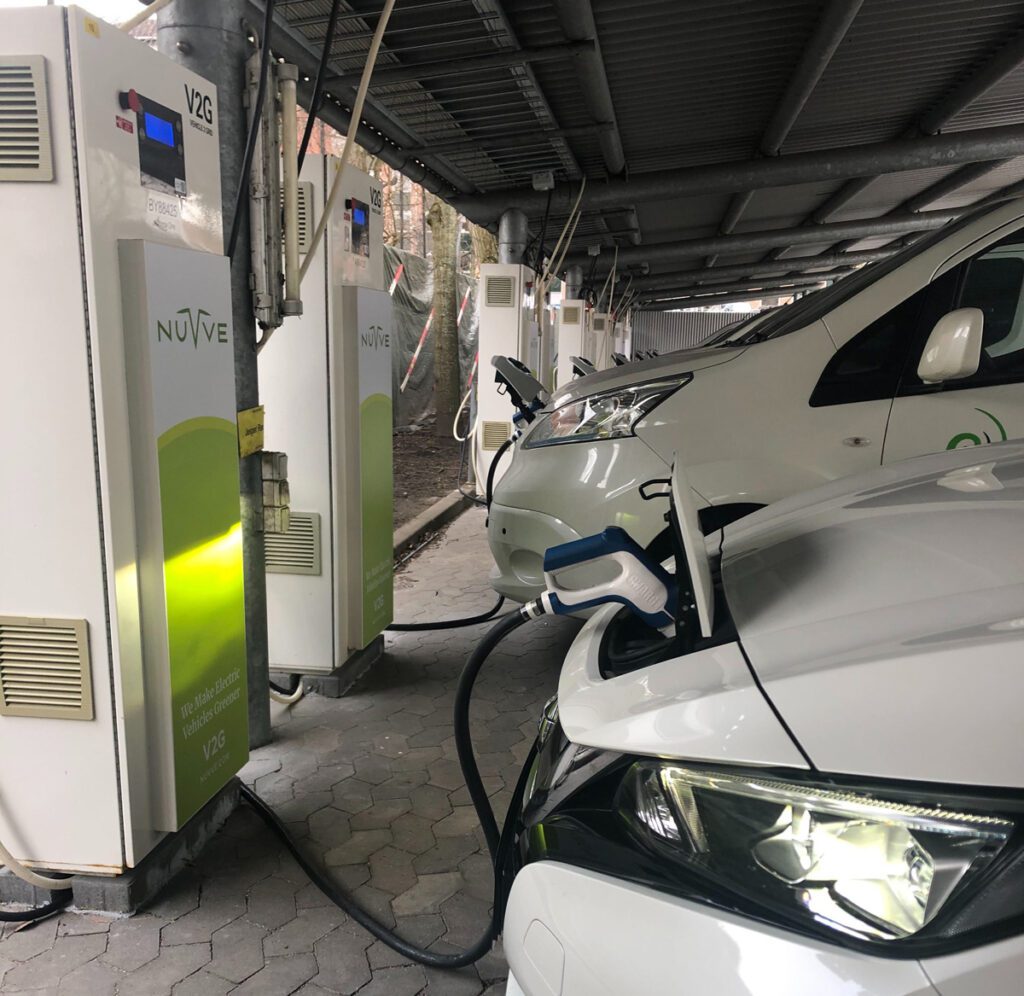

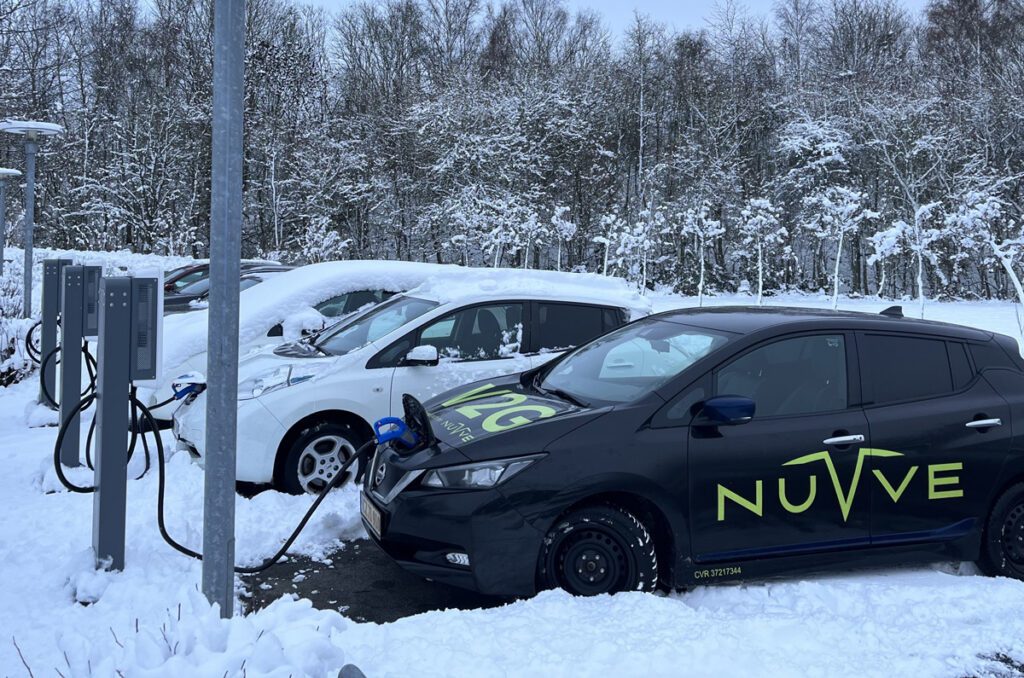

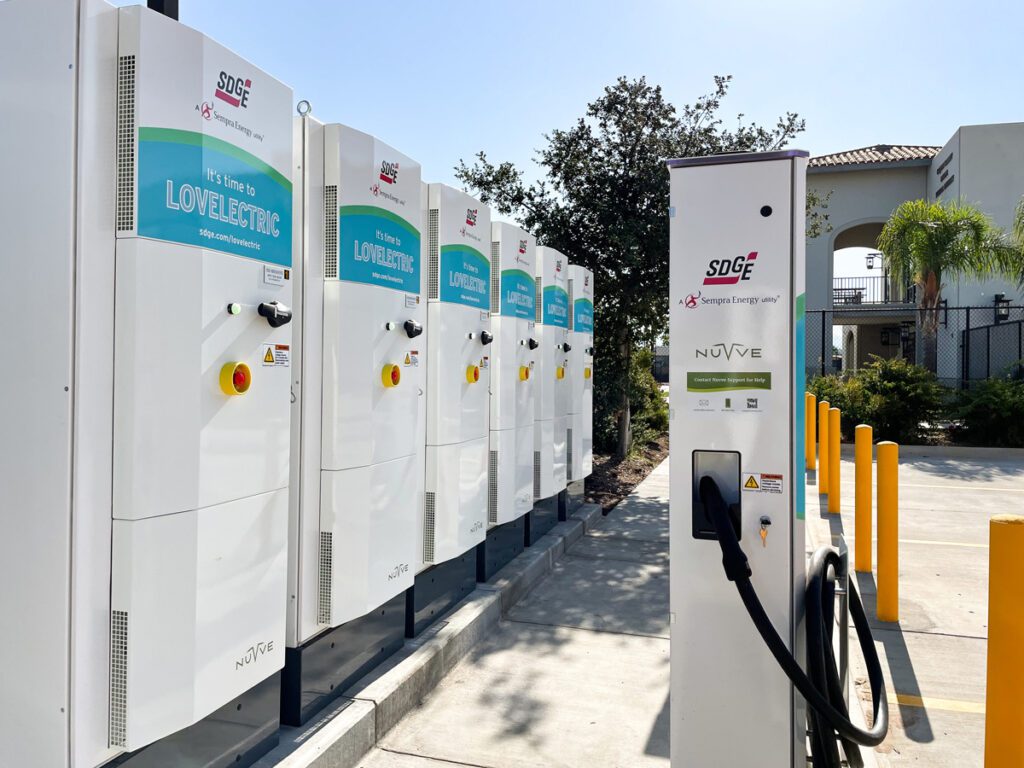



It’s also possible to do V2G through an AC port. In that case, you need to have an onboard bidirectional charger. That means the charger inside the vehicle can convert AC to DC to power the battery and take DC from the battery and convert it back to AC for export to the grid. Your charging station is a lot simpler in this case—it’s basically just replacing diodes with transistors to make it bidirectional from an AC perspective.
V2G through an AC port solution requires a little bit more work on the vehicle side, whereas V2G through the DC port really requires no work on the vehicle if you have ISO 15118-20 implemented.
V2G through an AC port solution requires a little bit more work on the vehicle side, whereas V2G through the DC port really requires no work on the vehicle if you have ISO 15118-20 implemented.
Charged: Does the bill refer to both of those options or does it leave it open?
Gregory Poilasne: The bill is agnostic. The bill is just saying the vehicles have to have bidirectional capabilities. My point to the Senate committee was that DC implementation inside the vehicle is pretty much no cost, it’s just having the right software, because people are, like, “Oh, it’s going to make the vehicle more expensive.” Also, it doesn’t affect the rules that the OEMs might be building around the battery warranty. We’ve been working with Nissan for many years now, and the only rules that we have with Nissan are that we cannot do V2G when the charge level is above 95% or below 30%. Between 30 and 95% we can do V2G without any effect on the battery warranty.
The case that I made for the Senate is that bidirectional capabilities, with the right V2G business model, can reduce the total cost of ownership of an EV, and therefore make EVs more affordable. It’s not just for the high end—even the Nissan LEAF has bidirectional capabilities today. In a pilot project in Denmark that has been running for over 7 years, we’re generating about $220 per month from grid services. That’s about two thirds of the leasing cost of a LEAF nowadays.
The only rules that we have with Nissan are that we cannot do V2G when the charge level is above 95% or below 30%. Between 30 and 95% we can do V2G without any effect on the battery warranty.
The other piece is understanding why bidirectional vehicles and vehicle-to-grid are essential to our clean energy future in California. More and more renewable energy is being added to the grid, but the distribution system has to be designed for the peaks. When you mix EVs and renewable generation, the peaks are going to get even bigger. So, you need to reinforce the distribution system for peaks that might be occurring less than 5% of the time, and, therefore, the cost of energy is going to go up for everybody, even people that cannot afford an EV, because the EV increases the volatility of the system.
The idea of vehicle-to-grid is that you are storing energy at the end of the distribution system, so you can absorb those peaks. You can bring the peak as close as possible to the average. Now you’re making a fully-optimized use of the infrastructure and therefore the cost of energy actually might go down for everybody.
I think those are the two most important messages: total cost of ownership and energy cost equity. To me, those are the two critical pieces of why vehicle-to-grid is essential. We are thinking that by 2030 we’re going to have eight million EVs in California. Eight million EVs on a 10-kilowatt charging station, that’s 80 gigawatts, that’s 80 nuclear reactors. It’s gigantic.
Charged: And it’s particularly important in California. Some months ago, they had rolling blackouts and they were asking EV owners to avoid charging at peak times. Of course, the anti-EV crowd picked up on that. How could V2G address that problem?
I think those are the two most important messages: total cost of ownership and energy cost equity. To me, those are the two critical pieces of why vehicle-to-grid is essential.
Gregory Poilasne: We actually participated during the heat wave. We saw the largest peak that the California grid ever reached: 52 gigawatts. One of the programs we participated in is called the Emergency Load Reduction Program, which is a demand response program in which you can also discharge to the grid. A regular demand response program, you go down to zero and then that’s it. With the ELRP, we get paid $2 per kilowatt-hour, and we can feed back to the grid. That means we can bring the meter negative.
Last year, we only had about six buses that were connected at Cajon Valley Union School District, so we had a few tens of kilowatts of capacity that we were able to dispatch. This year, we now have close to one megawatt of capacity across three different school districts. I think we have 22 or 24 buses in the San Diego area, and we have another deployment underway in the Los Angeles Unified School District, where we are initially deploying 24 as well. We are in the process of commissioning those charging stations right now.
Discharging during those peak hours when you have a heat wave, that’s really essential to balance the grid so that when you have this heavy usage we are able to compensate without using spinning reserve. When we had that peak last year, we brought down the load to 52 gigawatts, but everything was turned on—methane gas generators, gasoline generators, everything. From a CO2 footprint perspective, that was really bad.
Charged: Does SB 233 address commercial vehicles?
Gregory Poilasne: It’s all EVs. I know that there are some areas in the heavy-duty piece where they want CARB [the California Air Resources Board] to be involved with it. But buses, school buses, all those things will definitely be a part of it.
Charged: Does the bill include any mandates for utilities?
Gregory Poilasne: You can take this very complex issue and try to solve all the problems at the same time, or you can do it step by step. Senator Skinner has decided to go step by step. The first step is bidirectional vehicles. Then, with that, you can provide a business model where if you own a home, you can discharge your battery when the cost of energy is the highest, and you can also use the vehicle to power your house if the grid is down. That would drive the business around bidirectional charging stations.
Then the second step is to work with the utilities to be able to do grid services, which we are already doing today. The Emergency Load Reduction Program is part of that. And then you have another ruling called FERC 2222.
FERC [the Federal Energy Regulatory Commission] is the federal organization that regulates the independent system operators. FERC 2222 is saying that any behind-the-meter storage solution needs to be able to access the spot market, including ancillary services like frequency regulation, which are essential services to keep the grid balanced. This is opening the door to resources such as V2G participating in the spot market.
This regulation is in process because there is some complexity in how it gets implemented. Some of it relates to the energy going in and out at the consumer meter level and, therefore, the PSCs [state utility regulators] have to be involved with that, because the other thing that FERC says is that this market access needs to be fair. That means if you buy retail and you sell wholesale at your meter, it hurts your business case. You need to come up with a net metering business model. The utilities are like, “But you are still using my infrastructure so I need to be compensated for that.”
Those are some of the negotiations that are underway right now between different parties involved with the rollout of FERC 2222. But in places like Delaware or in PJM territory, which covers a very large percentage of the US population, this is getting implemented right now.
Obviously, the OEMs don’t like when there’s a mandate, so that’s why some are pushing back, but even the people that are pushing back are saying, “Yeah, we need to get there but we are not ready to do it right now.”
Charged: Do you think SB 233 has a good chance of being signed into law?
Gregory Poilasne: It’s a great question. Obviously, the OEMs don’t like when there’s a mandate, so that’s why some are pushing back, but even the people that are pushing back are saying, “Yeah, we need to get there but we are not ready to do it right now.” We expect that there will be some special requests for case-by-case accommodations to implement it. The next step is the budgetary piece that’s going to happen in a closed-door session of the Appropriation Committee on May 18th. If it survives appropriation, then most likely the Senate would approve it and then it would have to go to the chamber to get final approval.
Charged: You provide Nuvve-branded chargers. Do you make those chargers yourself, or are you collaborating with other manufacturers?
Gregory Poilasne: We have an AC charging station that we rolled out that came from our relationship with the University of Delaware. It’s bidirectional, but only with vehicles that have an onboard bidirectional charger. That’s our product. On the light-duty side we are working with ABB and Wallbox. Those are two of the charging stations we have deployed mostly in Europe at this point. We’ve got some others that we have not announced yet. On the DC side, we are rolling out a charging station right now with Rhombus.




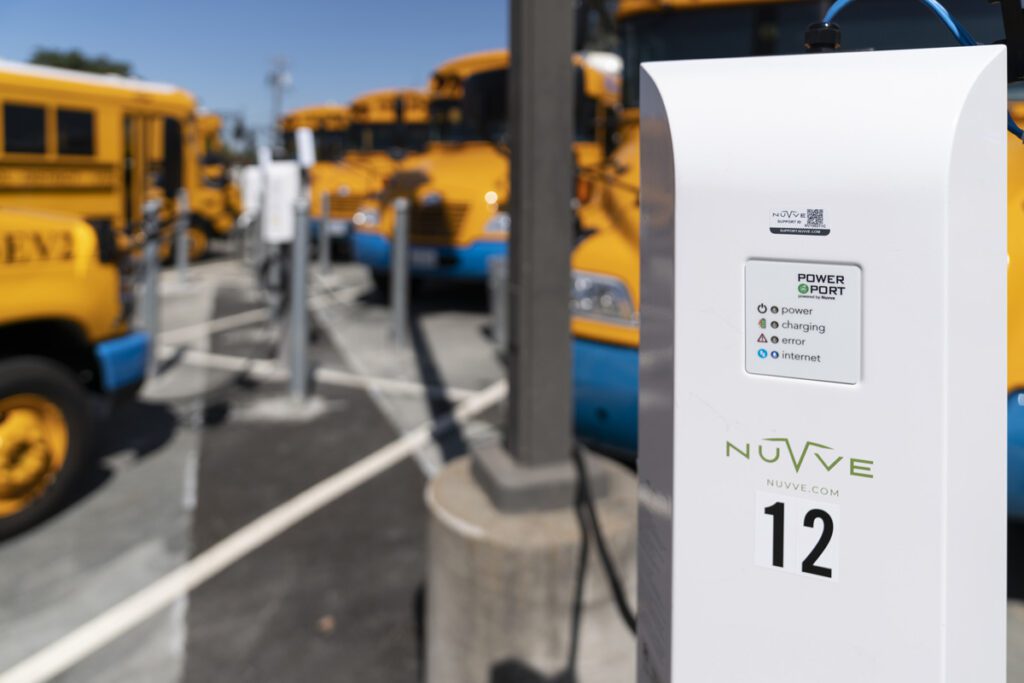



Charged: Does Nuvve provide just V2G implementation, or do you also offer a comprehensive fleet charging-as-a-service solution?
Gregory Poilasne: At the core, we are a technology company and a grid service company using EVs to provide those grid services. Now, there are certain segments where we provide a full CPO type of service, which is what we are doing in the school bus space. Where we are working with school districts, we are providing them with charging stations and maintenance.
We are here to bring the right people to provide installation, and in some cases, we are also the intermediary to help them finance those vehicles at an attractive cost. Those districts are tax-exempt organizations, therefore they have access to attractive loans. We see ourselves as the trusted advisor to the school districts as they go through the installation process, and then in the long run, providing grid services, which also includes monetizing the carbon offsets.
LA Unified is the second-largest school bus fleet in the US; they have around 1,800 diesel school buses. If you convert all of those to electric school buses, it’s 108 megawatts. That’s significant.
Charged: Are school districts your main customers at this point?
Gregory Poilasne: In the US, yes. Many including San Diego Unified, LA Unified. LA Unified is the second-largest school bus fleet in the US; they have around 1,800 diesel school buses. If you convert all of those to electric school buses, it’s 108 megawatts. That’s significant. Now, in Europe we have some partners like Circle K. They are headquartered in Laval, Quebec and they own 17,000 gas stations around the world.
Charged: School buses are generally considered to be an ideal use case for V2G. What are the pros and cons of some other use cases?
Gregory Poilasne: I think the only really bad one is fast chargers on the freeway, because you are not there to discharge. You want to go back on the road as fast as possible, otherwise your kids are going crazy. This is not suitable for bidirectional applications, but there is value in providing unidirectional services.
On-the-road charging is an environment that is expensive, so if you have the ability to use that very large capacity in order to provide some type of grid service without impacting the end consumer too much, this is very attractive. We’ve been working with Circle K on deploying our technology in Norway and Denmark, to provide grid services that only increase the charge time for the end user by 30 seconds to a minute.
The grid services include FCR-D, or Frequency Containment Reserve for Disturbances, which is a frequency-controlled response that happens only in extreme cases where there is a short but significant disturbance in the frequency of the electrical current. Basically, we would stop charging for 30 seconds or a minute and then restart, and hopefully, the grid is stable again.
There’s another service called FFR, which is a very fast-responding service—in the area of a tenth of a second. We are starting with Norway and Denmark, then we’ll expand across all of the Nordics. Now, they’re also deploying a lot of charging stations here in the US, and they’re also interested in looking at what other grid services we can provide. The issue with the US is that the grid is not as advanced as it is in Europe, and especially in the Nordics, so the system is not always able to send us the right signal in order to help keep the grid balanced.
The good business cases are vehicles that leave in the morning from the depot, do whatever they have to do and come back in the evening. Very often they’ll stay parked 14 hours a day, and also during the weekend. In Denmark, we’ve done all those light-duty fleets. We have some utility vehicles, some municipal vehicles, some private fleets.
The transit bus, it is not clear, because sometimes they are just a few hours at the depot, but not all the buses are coming late in the evening and leaving early in the morning. When you drive by a transit bus depot, you see a lot of buses that are parked maybe for many hours. Then the question is: What is the cost of doing V2G from an infrastructure perspective, and therefore does the business case work? As the cost of the charging session goes down, deploying universal bidirectional infrastructure makes a lot of sense.
Another interesting business case are electrified trailers. When you have a truck with a big trailer, if the truck comes with, let’s say, 500 miles of range, when you put a trailer behind it, now all of a sudden you have 150 miles of range. But if you have a battery in the trailer, the primary purpose of the battery could be to provide functionality—if it’s a refrigerated trailer, maybe the battery powers the fridge. If you put one or two sets of motors in the wheels, now the trailer can also provide some of its own traction, and therefore, reduce the amount of energy that the tractor needs in order to pull the trailer. [Food distribution giant] Sysco just announced that they were deploying some of those trailers. We have some similar projects in Europe, where we are actually implementing V2G.
Now think about a logistics center. Maybe this is a food place where you have some fridges and maybe some ovens, a lot of loads. And those trailers are usually parked for a pretty large amount of time. While they’re parked, obviously you’re going to charge them, but they have plenty of time to provide some grid services. This could be saving on the cost of the energy for the local site while also providing those grid services.
Municipal vehicles are another interesting business case. You drive by a heavy-duty utility vehicle parking lot, and they’re parked most of the time. There are a lot of cases where bidirectional capabilities can be very viable because the vehicles are parked. For certain periods of time, they might be parked 100% of the time for a few months, like school buses during the summer.
Those are some of the good use cases. Anything that is overnight, even in-city charging, V2G is great.
I think residential to me is the top. You might have home solar, a battery, maybe you can already interface all of that together. Your car becomes an extension of your home battery. Your home battery might be 15 kWh, but your car is 150 kWh. It’s a big increase.
Charged: Is the Wallbox Quasar the only residential bidirectional charger available at the moment?
Gregory Poilasne: There’s a product called dcbel. They are just finishing certification right now. ABB has a 10-kilowatt bidirectional charger. We are deploying that in Denmark.
Charged: Is there anything pending in Europe that’s comparable to the California SB 233 bill?
Gregory Poilasne: Not at this point, but the OEMs over there are very aggressive on the subject. BMW was involved with the V2G pilot of the University of Delaware many years ago. Volkswagen has been working on it. PSA has been working on it. Kia, Hyundai will be launching bidirectional-capable vehicles. No, there’s a lot of activity there, but not at the regulatory level.
I think everybody’s going to keep a close eye on what’s going on in California, because if it goes through, the whole US and the whole world most likely will go this way. Maybe excluding Asia, but the Western world will go bidirectional because the OEMs will build one car for all those markets.
Charged: Are the OEMs already moving in that direction without the need for regulation?
Gregory Poilasne: They just don’t like to be pushed to do something, but they are already there. The California Energy Commission is working on an interoperability test center. If all the vehicles have bidirectional capabilities, what happens when you plug one into charging station A? What happens when you plug it into charging station B? You want to have a site where the vehicles can be tested. One, you can make sure that the bidirectional capabilities are working, but two, you also want to understand some of the characteristics of the response of that control so that you understand what type of services you can use them for.
This article appeared in Issue 64: April-Jun 2023 – Subscribe now.
















































